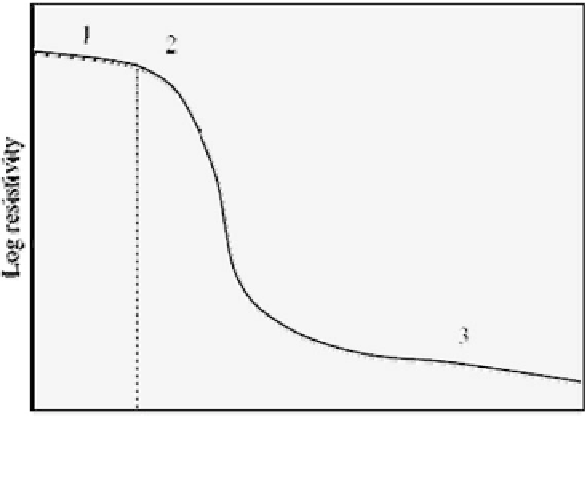Biology Reference
In-Depth Information
1
2
3
f
0
100
Volume fraction (%)
Conductive filler
Figure 3.1.
Percolationcurveofaconductingcompositebasedonnoncon-
ducting polymeric binder with conductive filler. Theoretical dependence of
composite resistivity on conductive filler content. In the zone 1, the electri-
cal resistance of the composite is similar to that of the polymer. In zone 2,
thepercolationfraction
f
representsacriticalconductivefillercontentthat
permitstheformationofthefirstconductingfilamentconsistingofparticle-
to-particlecontacts.Inzone3,electricalresistanceofthecompositeissimi-
lar to that of pure conductive filler.
posite materials, including conductivity in the case of gold NPs,
magnetic properties when using cobalt or iron oxide NPs, and
mechanical properties using NP fillers such as clay [53]. Whatever
the particular NP's composition or shape, its blending with most
polymerstendstowardphaseseparationthatresultsinparticleclus-
tering or aggregation within the host polymer. This problematic
issue can be addressed very effectively by appropriate NP surface
modification. A number of studies involves gold NP-polymer com-
posites introducing thiol-terminated polymers at some stage of the
NP growth process [54] or subsequent to the initial NP synthesis
[55,56].Coveringmetalsurfaceswithelectronicallyactivepolymers












